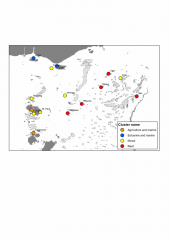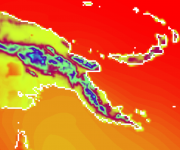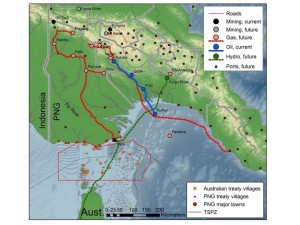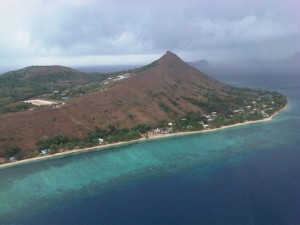NERP TE Project 11.1 - Building resilient communities for Torres Strait futures (CSIRO)
Project summary
This project is exploring potential future scenarios for the Torres Strait and will identify 'no regrets' strategies to improve livelihoods and achieve sustainable economic development. The project will help to deliver ongoing initiatives promoting climate adaptation, alternative livelihoods and economic development in the region.
Why this research is needed
The low-lying islands of the Torres Strait are vulnerable to climate change and the region faces a range of pressures including a growing population, future climate change, potential pollution as a result of rapid mining and resources development in Papua New Guinea, and increased shipping. In order to create a sustainable future for the peoples of the Torres Strait, it is important to understand potential future environmental and economic changes and proactively plan for them.
Research-user focus
The project will work with stakeholders to provide important information for planners and other decision-makers in the region. Research users include the Torres Strait Regional Authority, Australian Fisheries Management Authority, the Department of Sustainability, Environment, Water, Population and Communities, the Department of Foreign Affairs and Trade and the Queensland Department of Agriculture, Fisheries and Forestry.
Outcomes
- The main outcome of the project will be the improved capacity of communities and other decision-makers in the Torres Strait to anticipate and respond proactively to future sustainability challenges through:
- Greater awareness of drivers of change at local and regional scales.
- Exploration of alternative livelihoods and 'no regrets' strategies and policies.
- Increased capacity to avoid mal-adaptive strategies
- Development of community-based holistic plans to support adaptation planning for climate change and sustainability challenges.
- Future-proofing of relevant international, national and regional policies and strategies to ensure sustainable and resilient communities.
Reports, Publications and News
For more information see Project 11.1 'Building resilient communities for Torres Strait futures'; on the NERP Tropical Ecosystems Hub site.
Images
Datasets

Determining the impact on Torres Strait communities from future changes to ecosystems requires an understanding of the natural resource base that underpins their livelihoods. To do this, we estimate the relative importance of natural resources, or ecosystem goods and services (EGS) to local livelihoods, which in turn is a function of the relative volume of those EGS, and their relative value to human well-being. Our approach was focused on 'provisioning' and 'cultural' EGS, which have a direct link to local livelihoods.

This dataset consists of rasters representing downscaled climate change scenarios (8 km resolution) for the Torres Strait and Papua New Guinea regions for 1990, 2055, 2090. This includes estimated mean surface relative humidity (%), wind speed, rainfall rate (mm per day) and surface temperature (degrees Celsius) estimated from simulated conditions for 1980?1999, 2046-2065 and 2080?2099 time periods. Also included is the relative change of each attribute with respect to 1990.

The low-lying islands of the Torres Strait are vulnerable to climate change and the region faces a range of pressures including a growing population, future climate change, potential pollution as a result of rapid mining and resources development in Papua New Guinea, and increased shipping. Through participatory scenario planning with Torres Strait and PNG communities and stakeholders, informed by integrated ecosystem and climate modelling this project will identify ‘best bet’ strategies to protect livelihoods and achieve sustainable economic development. Tasks include:







